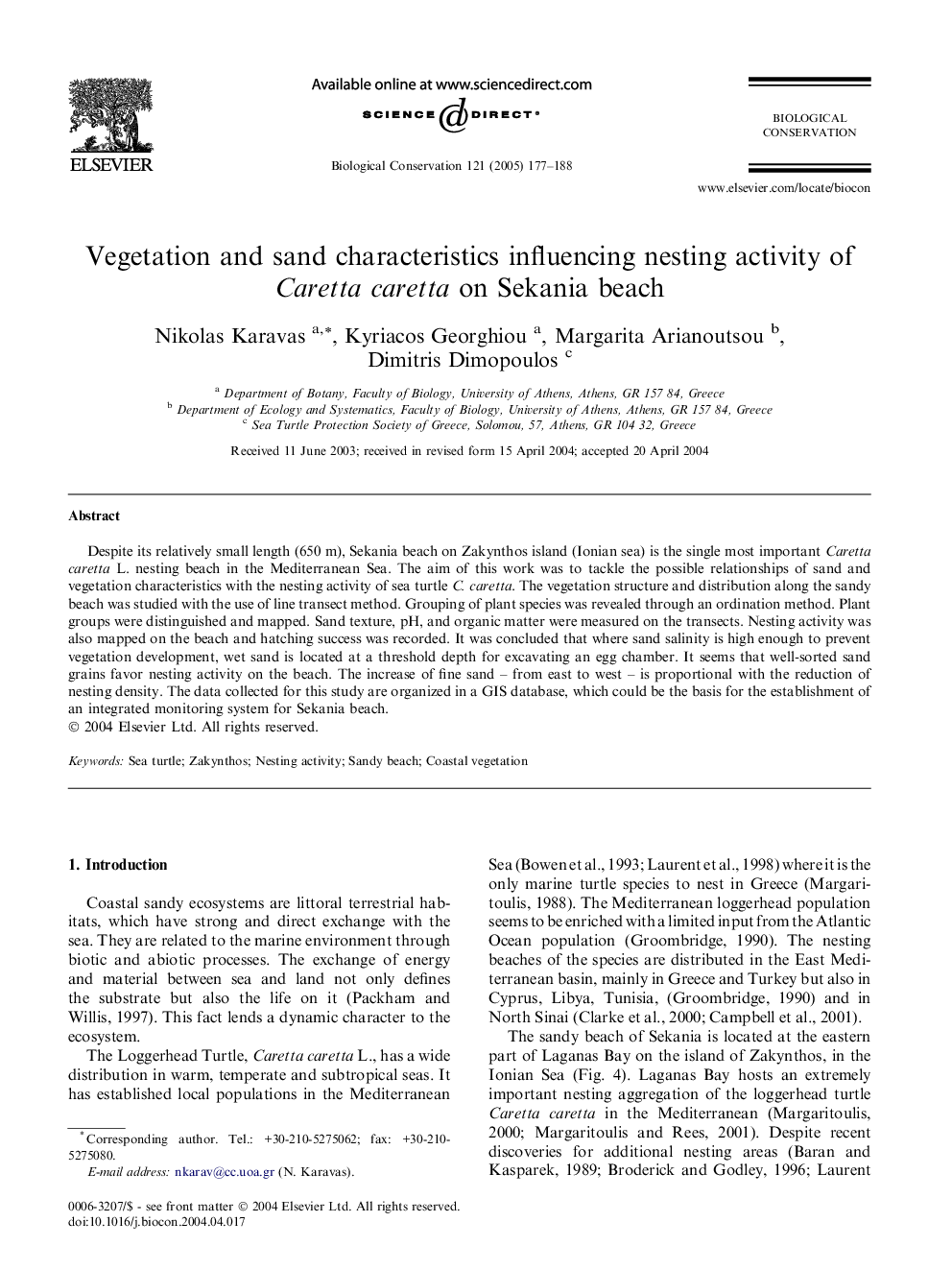| Article ID | Journal | Published Year | Pages | File Type |
|---|---|---|---|---|
| 9445967 | Biological Conservation | 2005 | 12 Pages |
Abstract
Despite its relatively small length (650 m), Sekania beach on Zakynthos island (Ionian sea) is the single most important Caretta caretta L. nesting beach in the Mediterranean Sea. The aim of this work was to tackle the possible relationships of sand and vegetation characteristics with the nesting activity of sea turtle C. caretta. The vegetation structure and distribution along the sandy beach was studied with the use of line transect method. Grouping of plant species was revealed through an ordination method. Plant groups were distinguished and mapped. Sand texture, pH, and organic matter were measured on the transects. Nesting activity was also mapped on the beach and hatching success was recorded. It was concluded that where sand salinity is high enough to prevent vegetation development, wet sand is located at a threshold depth for excavating an egg chamber. It seems that well-sorted sand grains favor nesting activity on the beach. The increase of fine sand - from east to west - is proportional with the reduction of nesting density. The data collected for this study are organized in a GIS database, which could be the basis for the establishment of an integrated monitoring system for Sekania beach.
Related Topics
Life Sciences
Agricultural and Biological Sciences
Ecology, Evolution, Behavior and Systematics
Authors
Nikolas Karavas, Kyriacos Georghiou, Margarita Arianoutsou, Dimitris Dimopoulos,
